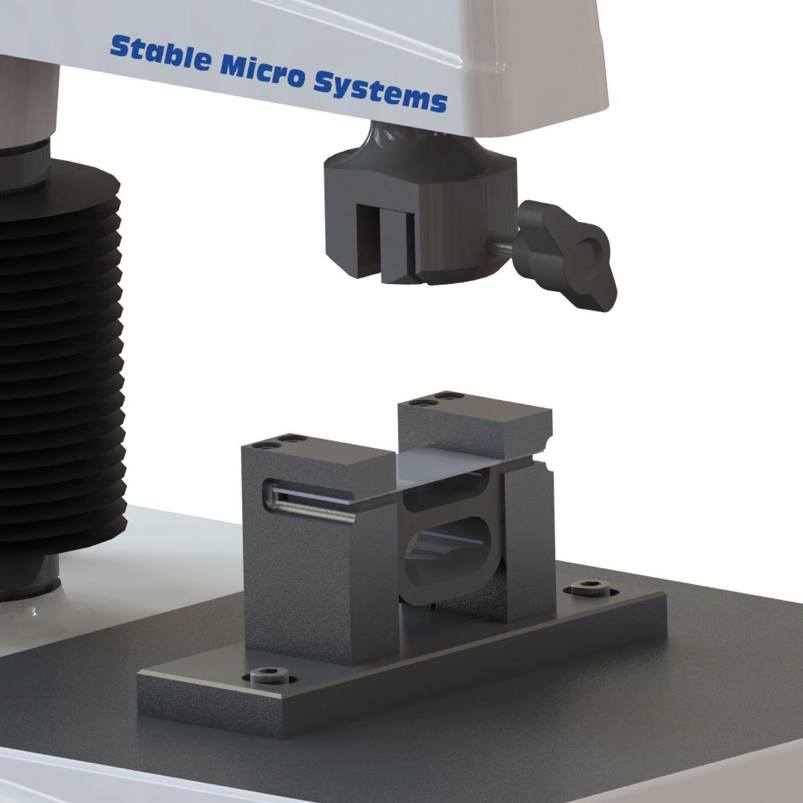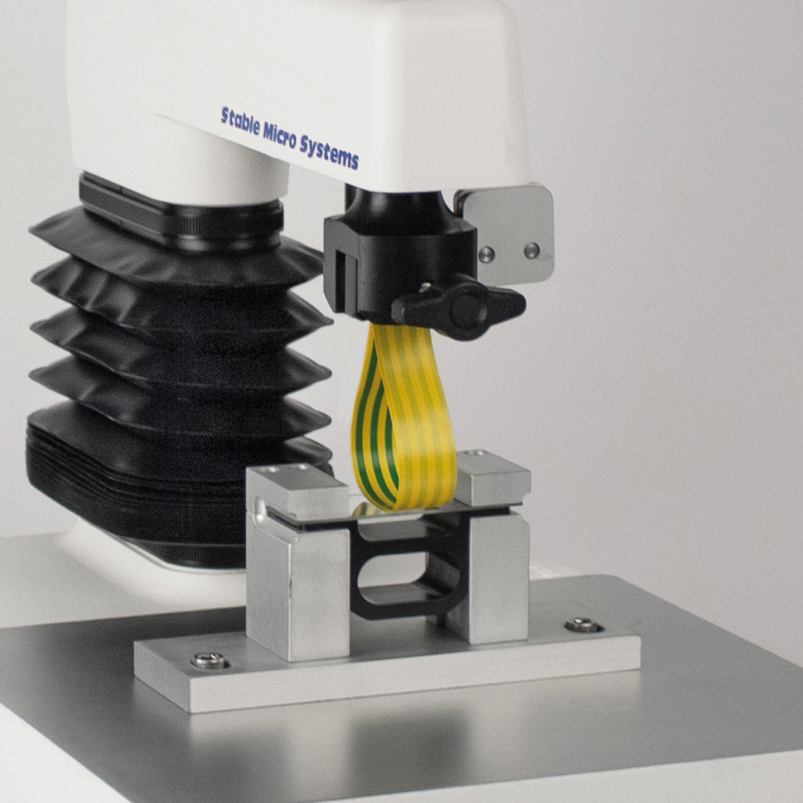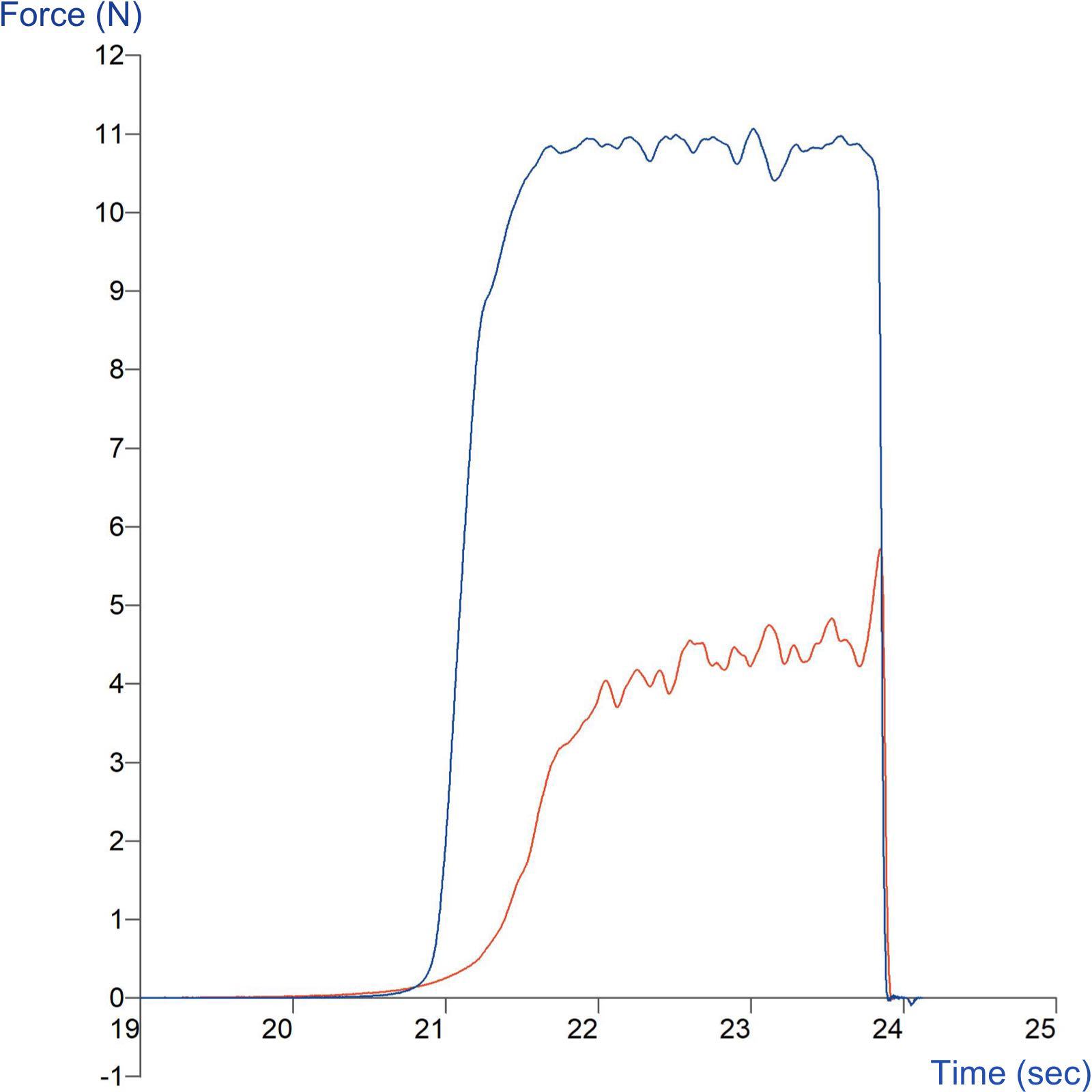Product overview
The Adhesive Loop Test System provides a means of assessing probably the most important and yet the hardest to measure property of pressure sensitive materials, the tack.
The 'Loop' tack or 'Quick-stick' value of a pressure sensitive material is expressed as the force required to separate, at a specified speed, a loop of material (adhesive outermost) which has been brought into contact with a specified area of a standard surface.
The test performs a loop tape method according to FINAT method no. 9. This allows the end user to compare the "initial grab" or "application tack" of different laminates and can be extremely useful to those working with automatic labelling equipment where this property is of particular importance.
The tack force is the maximum force measured at the moment just prior to the tape loop being completely separated from the glass slide. The force exerted by two peel fronts and the centre joint is measured. 'Quick-stick' tack is expressed as the average maximum value (ignoring any initial peaks), tested in Newtons.
Note: FINAT 9 can also be performed under the conditions of FINAT 5 (at elevated temperatures) and FINAT 6 (under ultra violet light).
How does the Adhesive Loop Test System work?
Ideal sample form
A flexible material which can be formed into a loop in order to grip and adhere to a chosen surface in order to be pulled off the surface in a peeling action.
Technical information
Installation
Full installation instructions are provided within the Education Zone of the latest Exponent/Connect software version and on the technical information sheet accompanying this product.
Chemical compatibility
Stable Micro Systems probes and attachments are commonly made from four materials: anodised aluminium (AA6082 T6), stainless steel (316 T), Delrin (acetyl copolymer) and Perspex (polycarbonate).
In general use, probes and attachments made from these materials will be suitable for testing food products and inert non-food materials.
The four materials listed above are not universally resistant to all types of chemicals and as such the compatibility of the probe/attachment material with the product (to be tested) must be established to prevent damage to the probes and attachments. If the compatibility of the product with the probe is unknown to the customer then the chemical information about the product (Material Safety Data Sheet or Product Data Sheet) should be submitted to Stable Micro Systems. Stable Micro Systems will then assess the suitability of the probe/attachment material for use with the product and advise accordingly. If this advice is not sought then Stable Micro Systems will not accept liability for probes/attachments damaged by chemical attack from the product being tested.
Cleaning and maintenance
All probes and attachments may be cleaned in warm (or hand hot) water using a mild detergent. A soft brush may be used but abrasive cleaning aids should be avoided. Stable Micro Systems products should not be microwaved or cleaned in a dishwasher.
Screw threads should be lightly lubricated after drying using a light lubricant, e.g. petroleum jelly, mineral oil. This will aid the fitting and unscrewing of the item. Each component of a probe or attachment should be wrapped separately when stored, to avoid scratching or chipping. This will safeguard against any unnecessary damage to the accessory.



